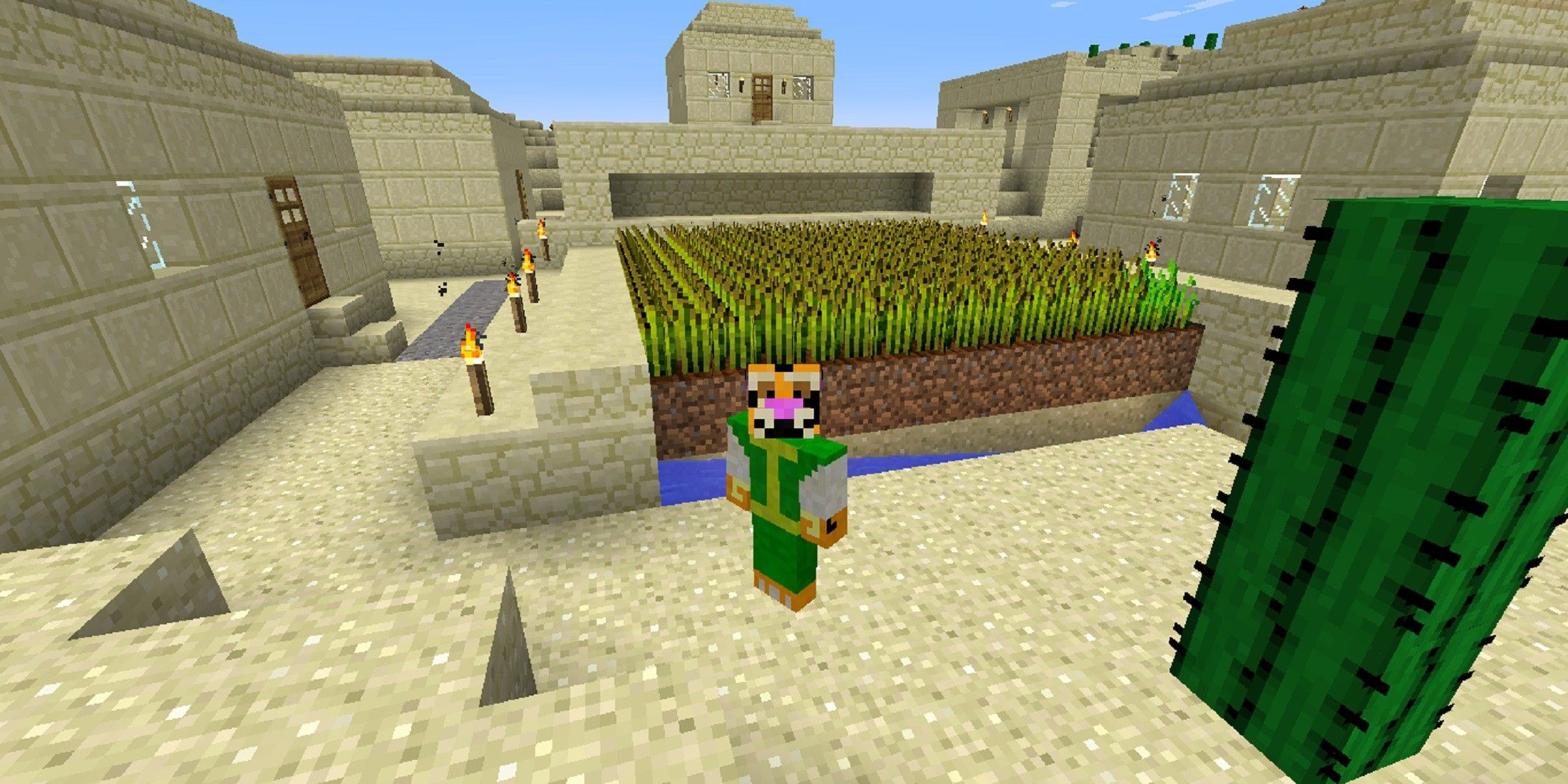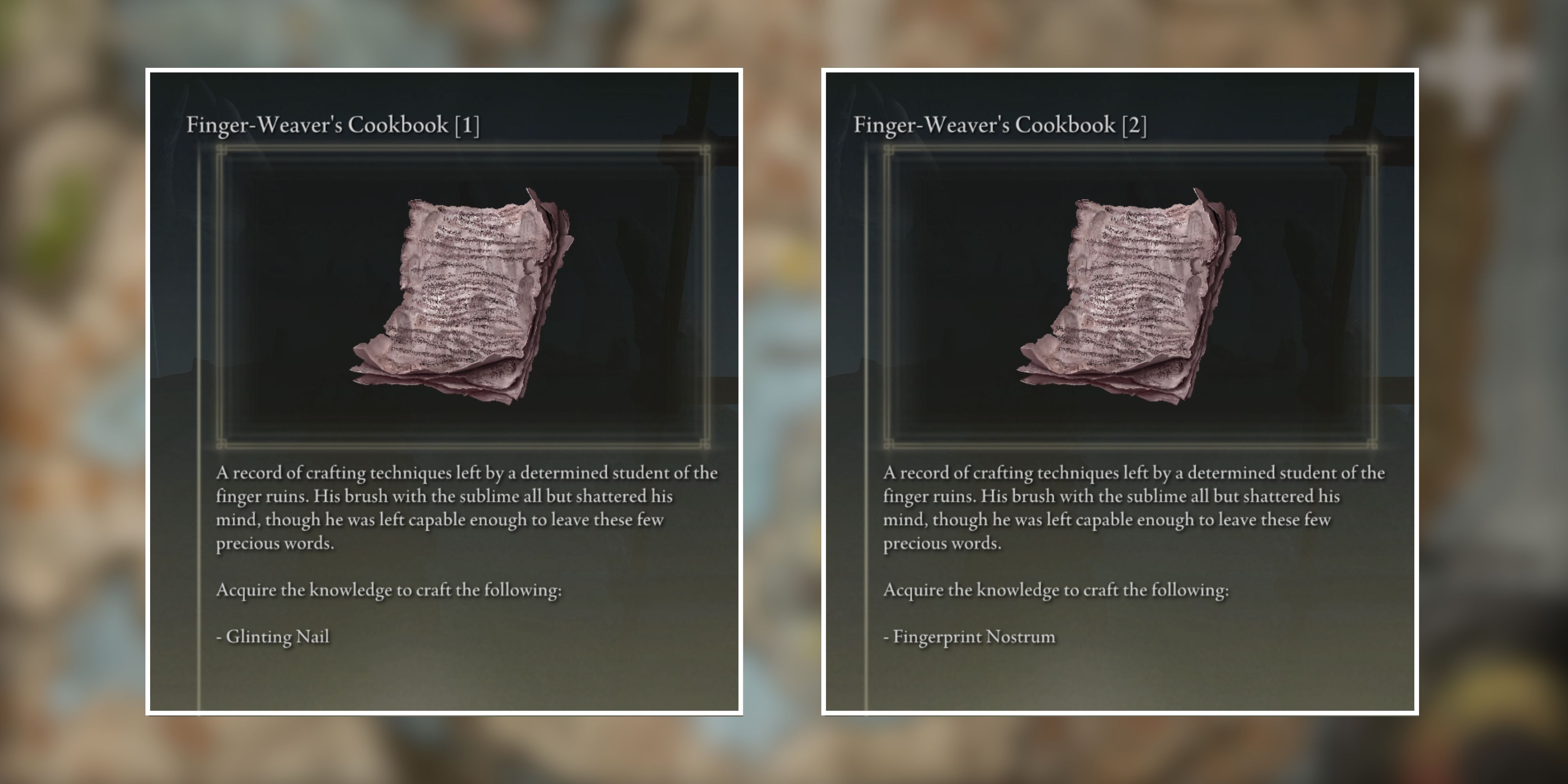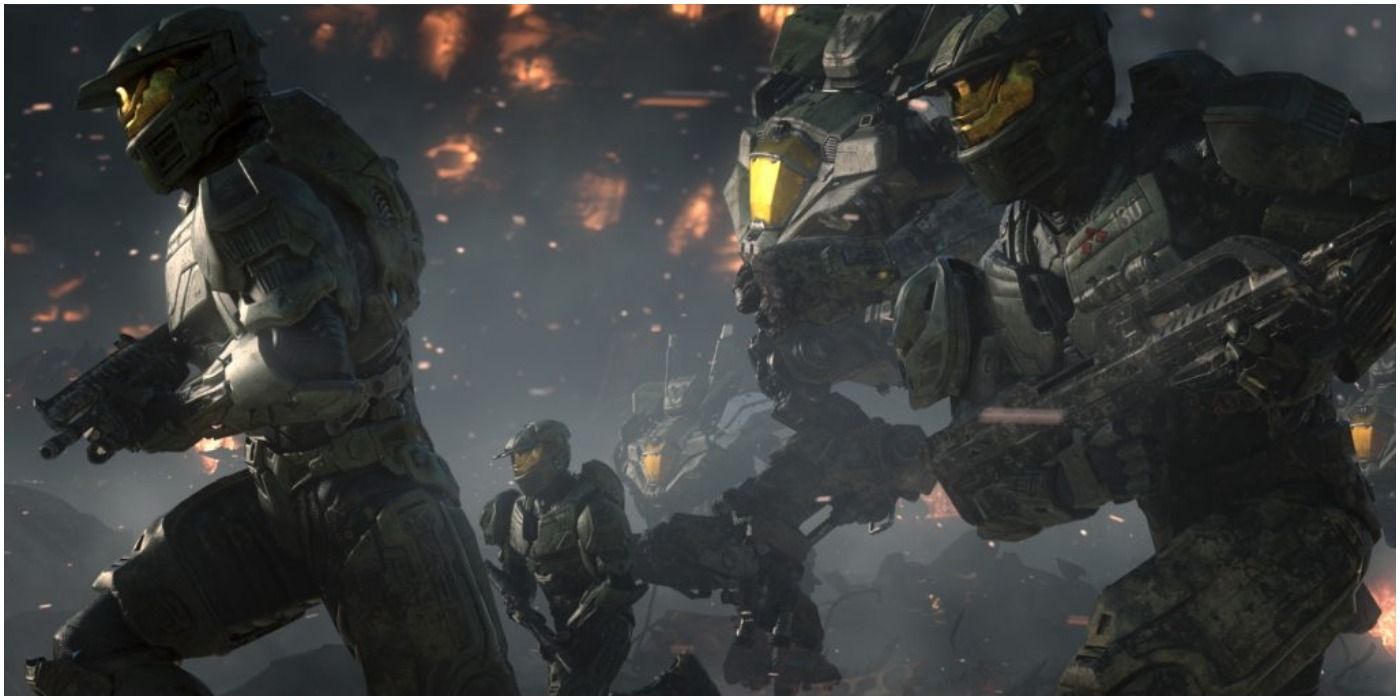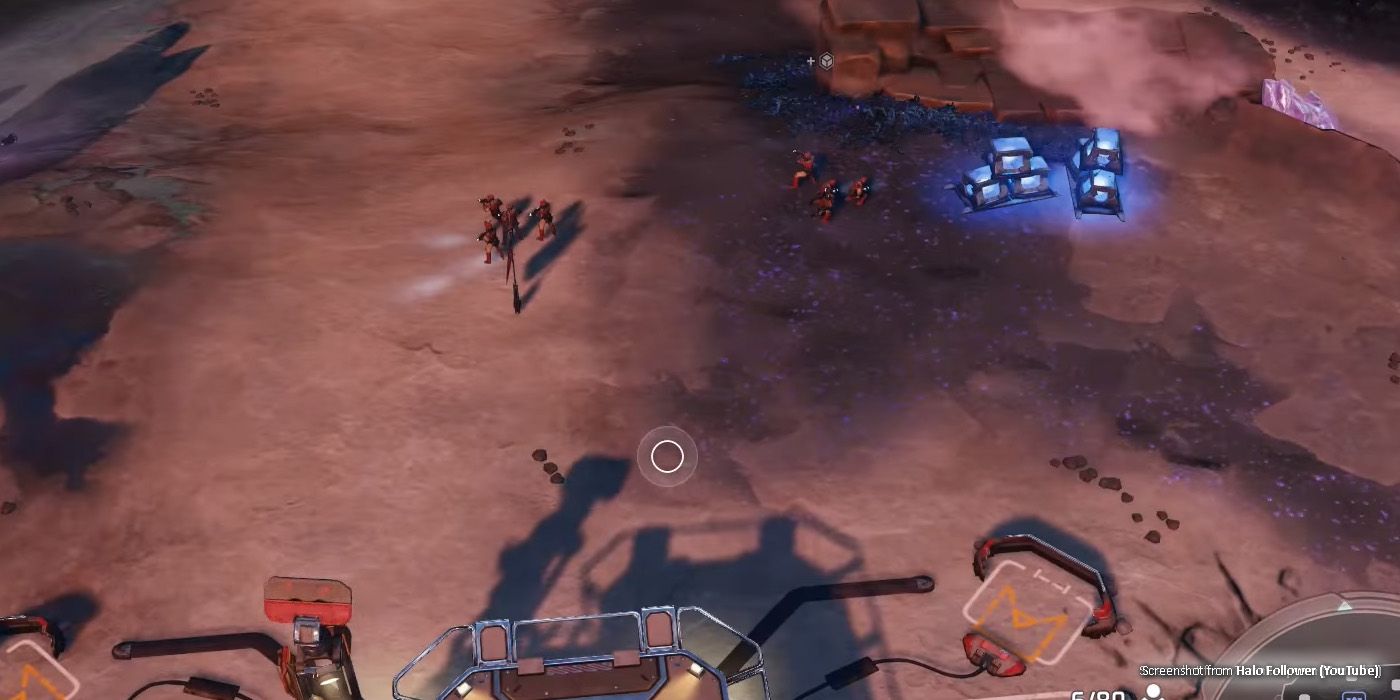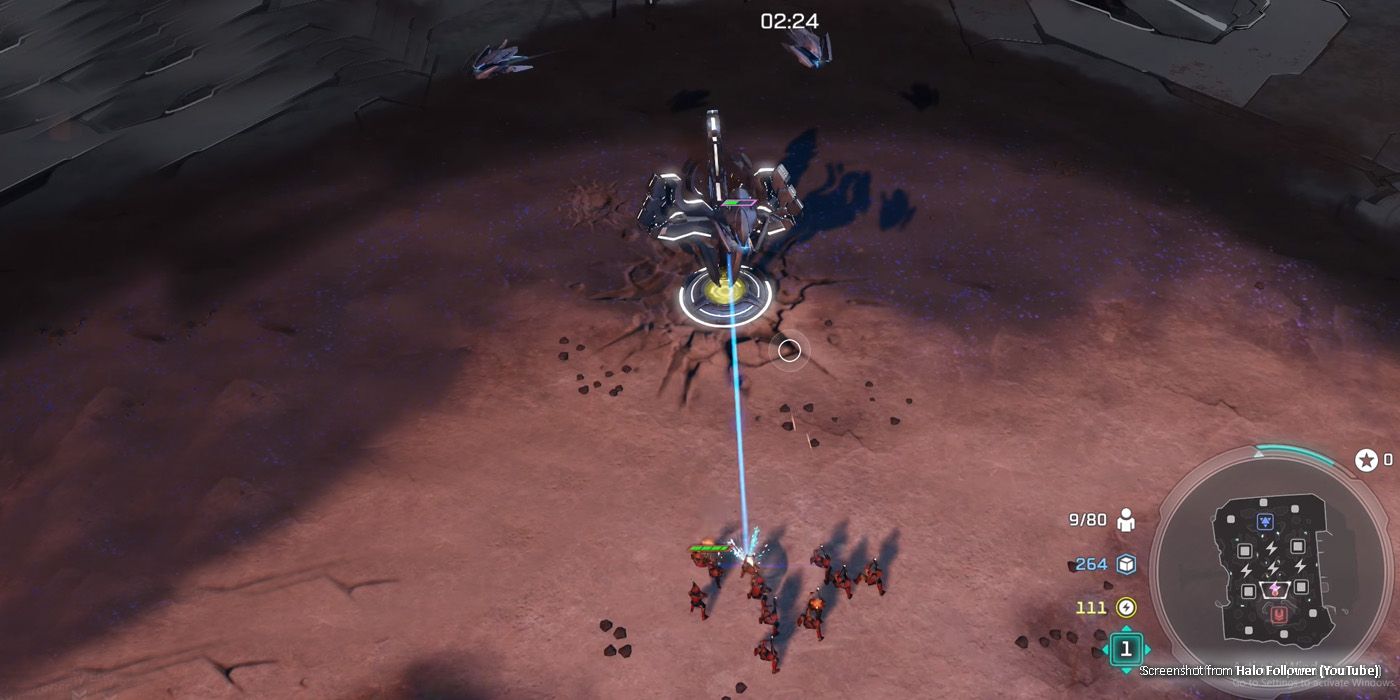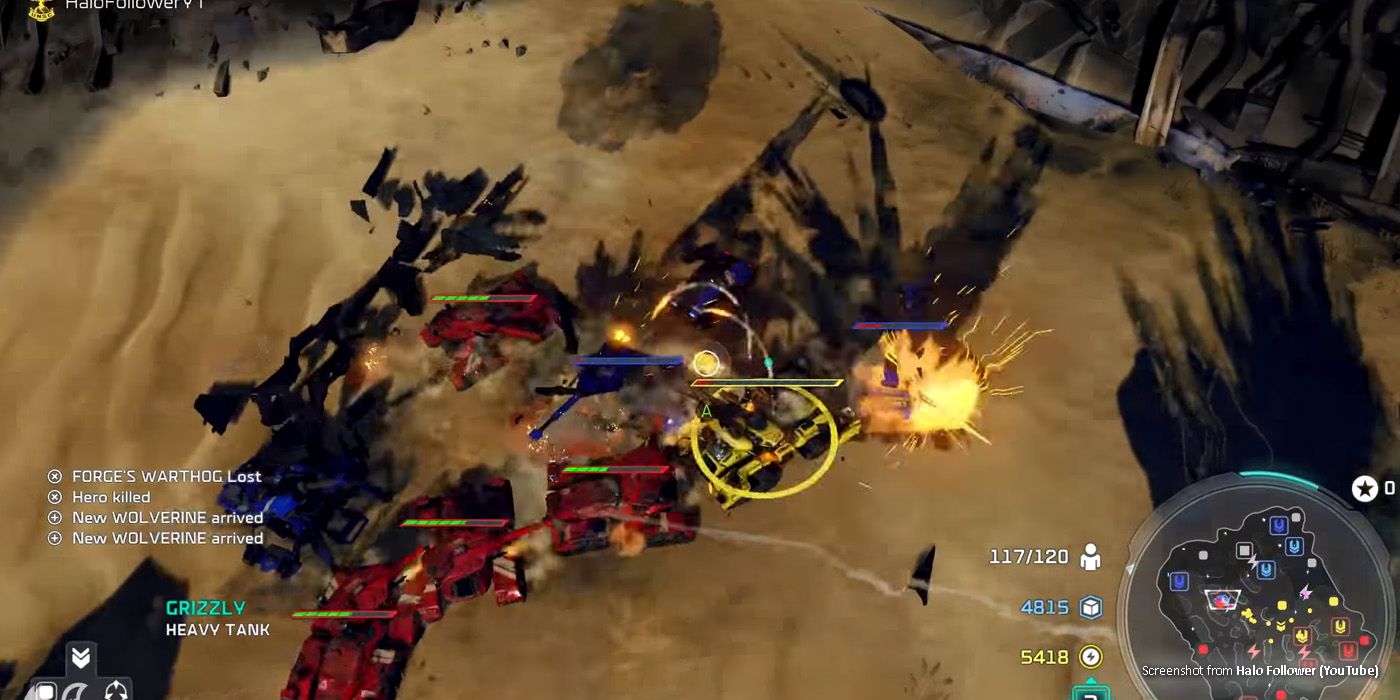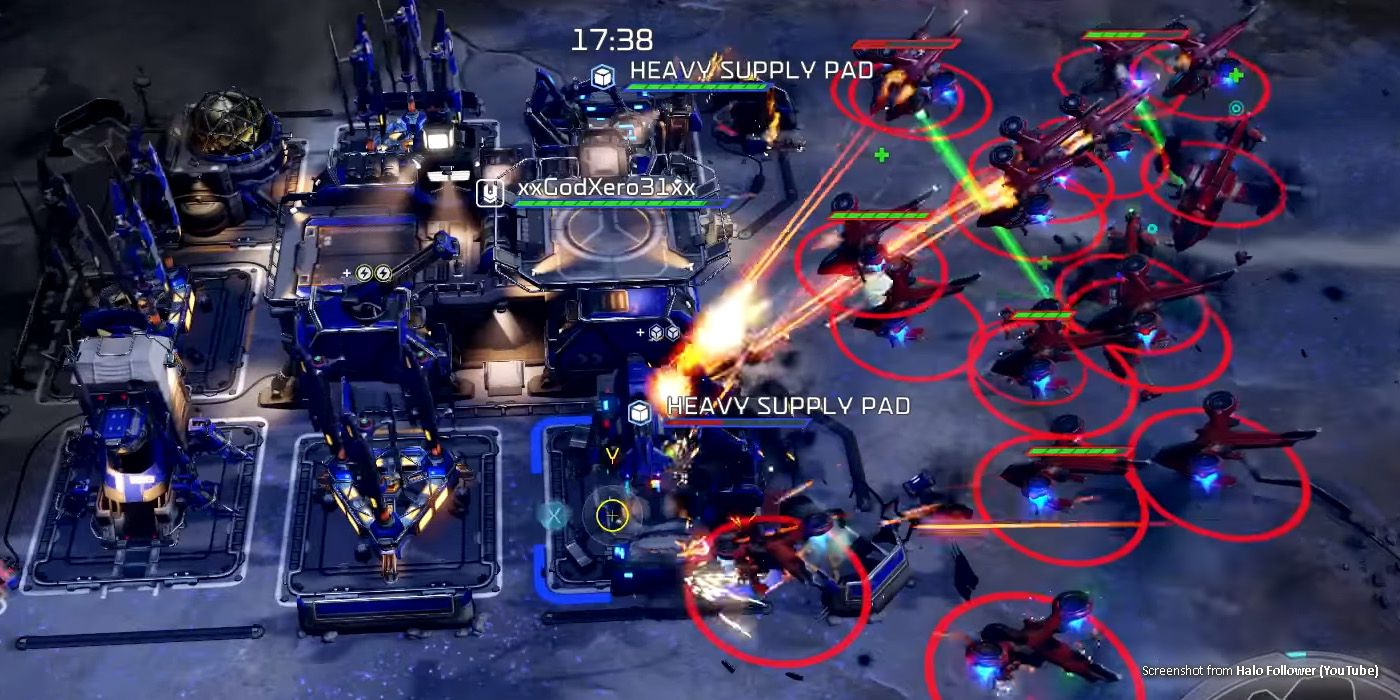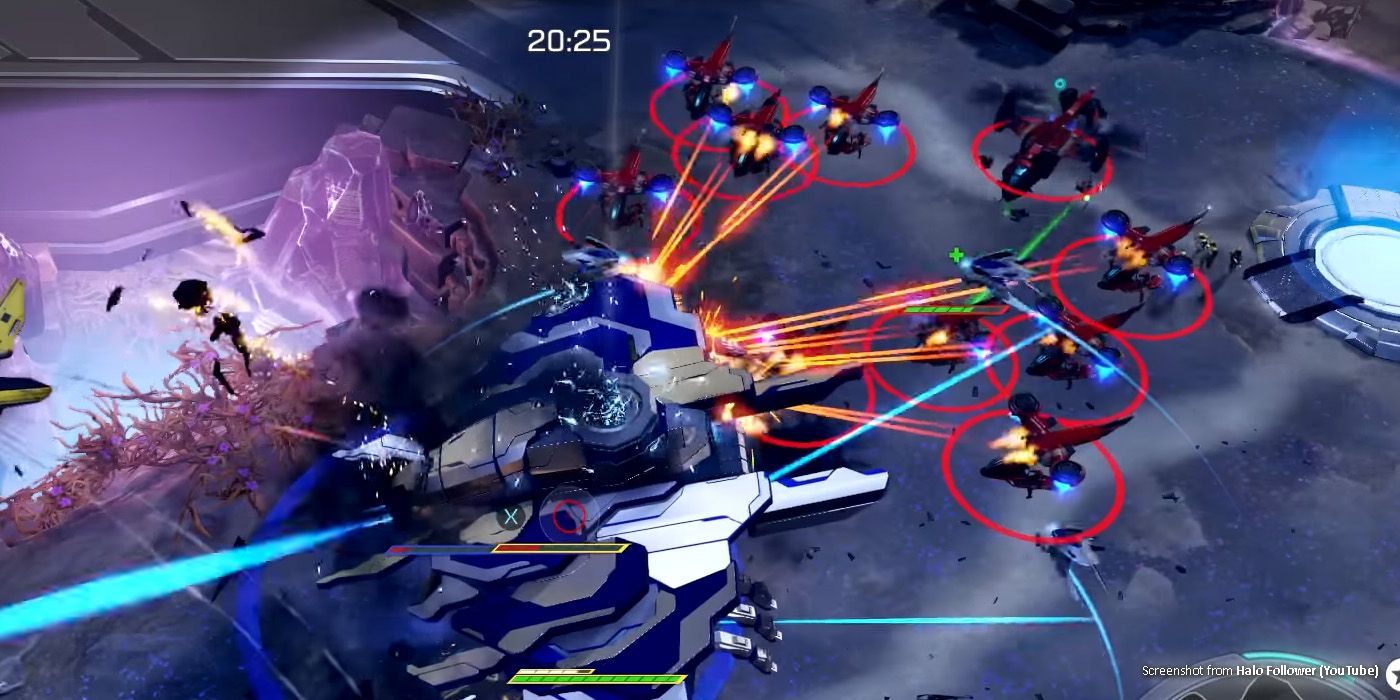Action fans had a hand in saving the world thanks to Halo and Master Chief. After all, this super soldier spearheaded a campaign against the invading Covenant over the span of a few titles. And if Halo Infinite is any evidence, Halo has become of the most iconic Xbox titles (or anywhere, in general) in gaming. Thanks to its aesthetic and robust multiplayer, fans keep going back to Halo for its unique take on sci-fi FPS.
Interestingly, Ensemble Studios built an RTS take on 343 Industries' star franchise. Instead of an action title, Halo Wars pegged itself as a real-time strategy game that lets players take on the roles of the UNSC, the Covenant, and, in Halo Wars 2, the Banished. Thanks to these games, players can see a bird's eye view of military combat in Halo's alternate reality. And for UNSC players, just how can they take advantage of Earth's advanced weaponry and units?
10 Secure Crates Early On
Bases will most likely have nearby crates at the start of a match, giving each player enough basic resources to at least form a decent line of defense. Players should have their Marines secure available crates while basic buildings are being constructed. Thanks to this strategy, players will likely have enough resources to deploy a third set of Marines on top of the two available on the onset of the match.
With this approach, players can easily secure a Power Node and jumpstart the rest of their strategy. They can also use this time to get a feel of the map and understand any potential points of contention they should pay attention to.
9 Power Is Key
Another handy piece of advice from TeamRespawn is to invest in power early on in the game. If players already have two generators upgraded, securing the Power Node early on gives them a decent boost in power that can open up better upgrades. However, players should hold off building a third Generator as they can use the leftover resources for better units or buildings.
Moreover, players should be careful when securing their first few Power Nodes. In the early game, three or more Marines are ideal in securing points in the game. That way, one squad can focus on point capture while the others pick off potential attackers.
8 Prioritize Getting To Tech 2
Similar to most RTS games, pro players tend to dominate the battlefield as soon as they get a decent lead with both their resources and available units. In the case of Halo Wars 2, getting more advanced Tech early on is essential as it forms the backbone of most endgame strategies.
Ideally, players should build one Generator and two Supply Pads immediately. After building that first Generator and securing some nearby crates, there should be enough to upgrade that first Generator. Securing an Advanced Generator will allow players to upgrade their Supply Pads, and then build another Generator. This two-for-two combo should be enough to branch out into preparing for midgame battles early on.
7 Prepare To Branch Out
The enemy's response to the Power Node nearest to the player should give them a decent grasp of how advanced the enemy is in terms of their base construction. As such, players should think about the approach they want to make during the battle. A few skirmishes with Marines and Jackrabbits should do the job in figuring out even a bit about the enemy's strategy. With that information in mind, players can proceed to Tech 2 and advance from there.
For instance, players can prepare for this midgame approach by securing low-cost additions to the base, such as unique commander features and even Turrets for defense.
6 Try To Secure The Win
An example of a "branching out" strategy would be a head-on assault. TeamRespawn's iteration of the above tips brought them to Tech 2 at around the 4-minute mark of the match. In regular matches, this factor opens players to more expanded options such as Barracks for advanced units, Garages for vehicles, and even Siege Turrets for stronger defense.
However, players who want a fast win could try securing the match this early on. After securing their first Power Node and getting to Tech 2, they are likely a few squads ahead of the opponent. It's also likely that enemies have focused on bolstering their unit creation first instead of defenses. As such, well-timed Marine squads could rush in for the kill.
5 Lead Enemies Away, Not To Your Base
Attacking early on in the match is a great way to test the waters. For instance, players that end up attacking the enemy only to get greeted by a stronger force should definitely retreat. However, players shouldn't retreat back to their base after losing a fight. After all, this only encourages enemies to prepare an offensive as the player is actively retreating.
Instead, retreat either farther into the map or into the base of an enemy combatant. This strategy takes away the attention from the defender, and will buy the player time to build extra units or mount defenses. Likewise, on the chance that the defender retreats back to their base, the player has salvaged some units.
4 Consider Unit Worth
In this case, "Unit Worth" doesn't necessarily mean how much resources they cost. Rather, players should always gauge the value of a unit when it has to fight in a battle. For instance, players should always try to use a unit's special ability before they get destroyed. This strategy might not make them win, but it does maximize the worth of the unit in question.
Likewise, players should also consider abandoning units when a battle is lost. Instead of salvaging units that won't work against an enemy's defense, players should take this time to build the necessary countermeasures for their enemy's setup. Thanks to the rock-paper-scissors style of units in Halo Wars 2, players can adjust to situations much quickly.
3 Scatter To Confuse
Players on the defensive should avoid putting all their effort into fighting the enemy assault. Instead, they should try to scatter their forces while defending their base. This strategy can be extremely useful when fighting massive armies. Since these units tend to pulverise enemies they attack, the best way against them is to make them stop attacking and tear through their armor. Players can do this by confusing the enemy with movement.
Scarabs in Halo Wars 2 move painfully slow, with turning taking a lot of clicks. As such, players can use this opportunity to attack their units while moving around the Scarab, keeping their more vulnerable units behind the Scarab's line of fire. Likewise, they can try to flank enemy units making an assault, forcing the enemy to focus on a single unit but risk eliminating their other side.
2 Watch Out For Loose Defense
Players on extended battles might seem to find themselves unable to pierce through enemy defenses. This caveat can be a bummer, as matches can soon become wars of attrition. However, players should watch out and exploit blind spots, as these can easily cripple an enemy's overall economy in the long run.
This strategy usually works when enemies have two or more bases, as these secondary bases usually serve as a resource hub. As such, they're likely not as defended as the main base. Players with extra units can mount an offensive on this secondary base but should grow wary of counterattacks from the rear. Likewise, enemies distracted by this approach can motivate players to go full aggro on the main base.
1 Risk Defense For Offense
Another interesting move is to actually risk going all out while being attacked. Instead of fully dedicating their resources to defense, players can alternatively push for an offensive to an otherwise-unguarded enemy base. When done correctly, players might secure a surprise win.
This strategy works best if players are put in a position where they have "nothing to lose." For instance, this tactic works as a great finisher - after all, if they're losing, they might as well give all they've got. Likewise, this strategy works as a gauge to see whether such a risk would work against the enemy's set up anyway, and give notes to future encounters.

